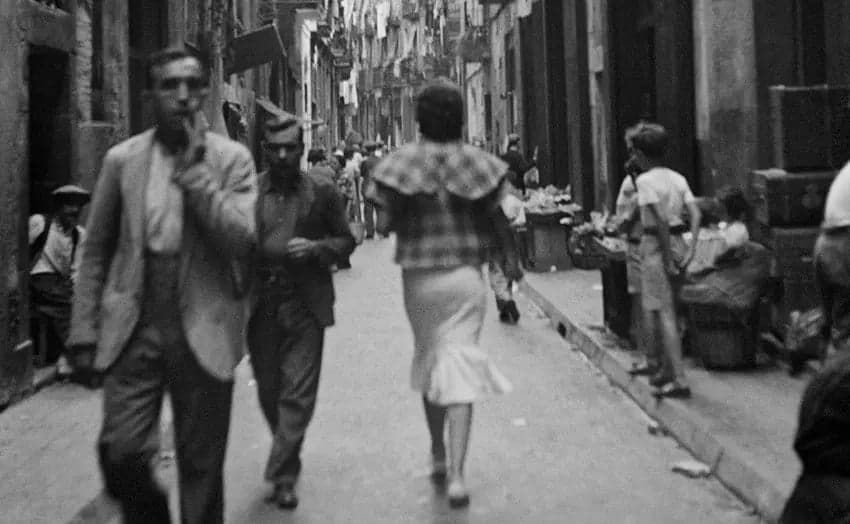How a female teacher campaigned for Spain to have a Father's Day

Today marks Father’s Day in Spain, the day when children all over the country come home with handmade crafts and often enjoy a special meal with their dads. But what are the origins of this day in Spain and why is it celebrated on March 19th?
Did you know that Spain hasn’t always had a Father’s Day? In fact, the country’s first Día del Padre was held in 1948 and came about thanks to a teacher in the Madrid neighbourhood of Vallecas.
The teacher, Manuela Vincenta Ferrero, petitioned for the day to be created after a group of parents at her school requested that children have a day when they bring home a handmade gift for their fathers, as they did for their mothers, on Mother’s Day.
So, Ferrero decided to write an article in the education newspaper – the Periódico Magisterio to encourage other schools to adopt the same practice.
Father's Day and the Festival of San José
Ferrero declared that Father’s Day should be March 19th, to coincide with the festival of San José.
San José or Saint Joseph was the Virgin Mary’s husband and father figure to Jesus, representing the values of being a good husband and a good father. He is also the patron saint of the Universal Church, immigrants, craftspeople, workers and engineers.
Father’s Day roles out across the country
After the day was adopted in schools, it became more popular when the chain of well-known department stores Galerías Preciados, a rival to the much-loved El Corte Inglés, decided to promote the day in their stores.
The department store wanted to hire Ferrero herself to encourage the purchase of gifts designed for fathers. She rejected the proposal however and instead suggested that the stores hire young people from her school to promote the gifts instead.
Father’s Day in Spain today
Today, Father’s Day is still celebrated in Spain on March 19th. Children still make handmade gifts at school to bring home and shops have continued to add to the tradition, making it bigger and more popular by selling specialised Father’s Day gifts and cards.
It is also traditional on this day to eat crema de San José, which is like the Catalan dessert, crema Catalana, a sweet custard topped with a layer of caramelised burnt sugar and often flavoured with orange peel and cinnamon.
Comments
See Also
Did you know that Spain hasn’t always had a Father’s Day? In fact, the country’s first Día del Padre was held in 1948 and came about thanks to a teacher in the Madrid neighbourhood of Vallecas.
The teacher, Manuela Vincenta Ferrero, petitioned for the day to be created after a group of parents at her school requested that children have a day when they bring home a handmade gift for their fathers, as they did for their mothers, on Mother’s Day.
So, Ferrero decided to write an article in the education newspaper – the Periódico Magisterio to encourage other schools to adopt the same practice.
Father's Day and the Festival of San José
Ferrero declared that Father’s Day should be March 19th, to coincide with the festival of San José.
San José or Saint Joseph was the Virgin Mary’s husband and father figure to Jesus, representing the values of being a good husband and a good father. He is also the patron saint of the Universal Church, immigrants, craftspeople, workers and engineers.
Father’s Day roles out across the country
After the day was adopted in schools, it became more popular when the chain of well-known department stores Galerías Preciados, a rival to the much-loved El Corte Inglés, decided to promote the day in their stores.
The department store wanted to hire Ferrero herself to encourage the purchase of gifts designed for fathers. She rejected the proposal however and instead suggested that the stores hire young people from her school to promote the gifts instead.
Father’s Day in Spain today
Today, Father’s Day is still celebrated in Spain on March 19th. Children still make handmade gifts at school to bring home and shops have continued to add to the tradition, making it bigger and more popular by selling specialised Father’s Day gifts and cards.
It is also traditional on this day to eat crema de San José, which is like the Catalan dessert, crema Catalana, a sweet custard topped with a layer of caramelised burnt sugar and often flavoured with orange peel and cinnamon.
Join the conversation in our comments section below. Share your own views and experience and if you have a question or suggestion for our journalists then email us at [email protected].
Please keep comments civil, constructive and on topic – and make sure to read our terms of use before getting involved.
Please log in here to leave a comment.